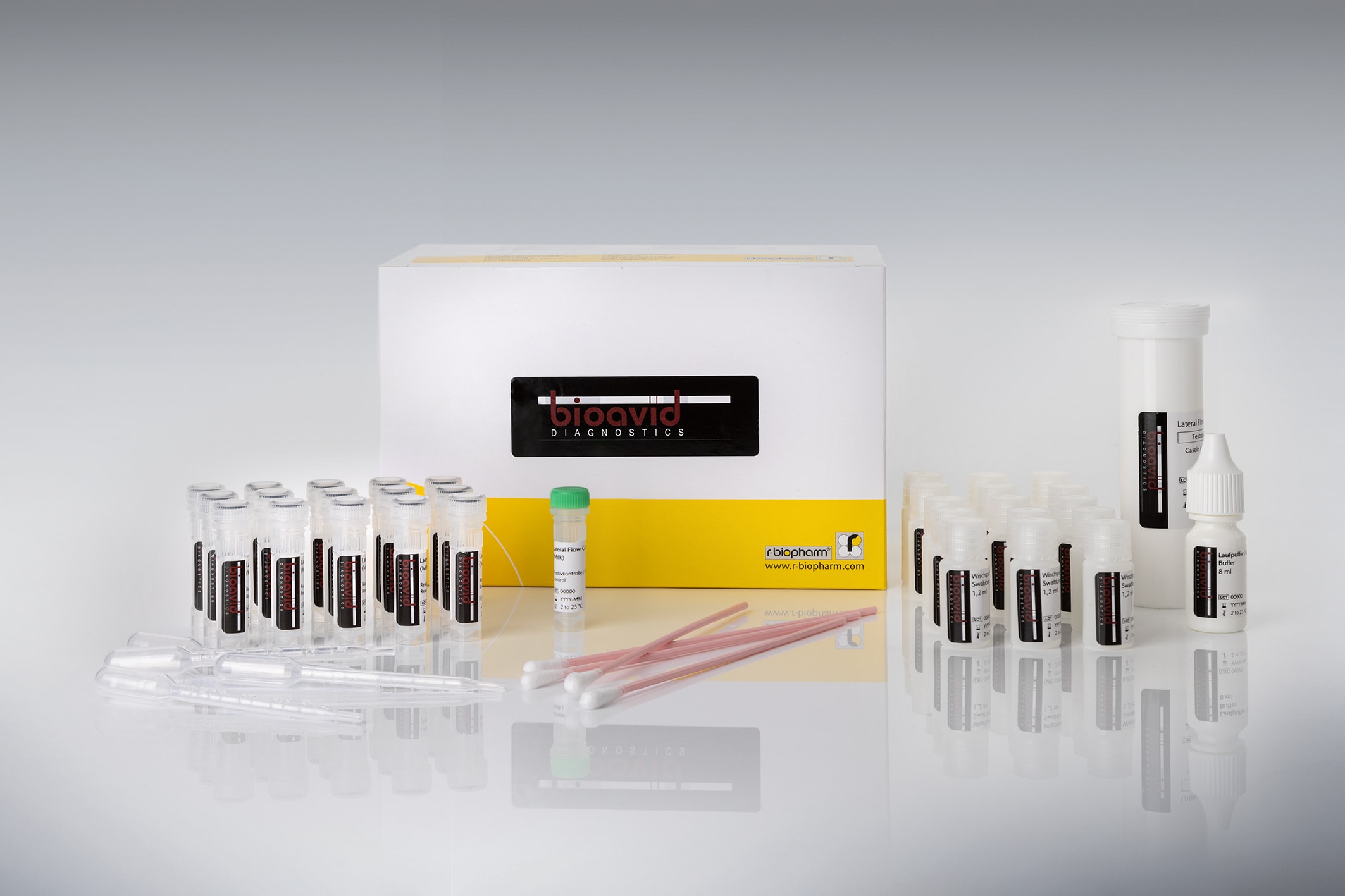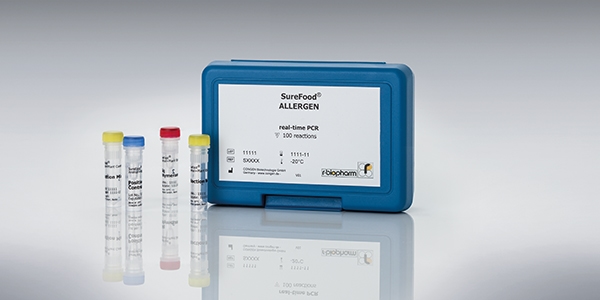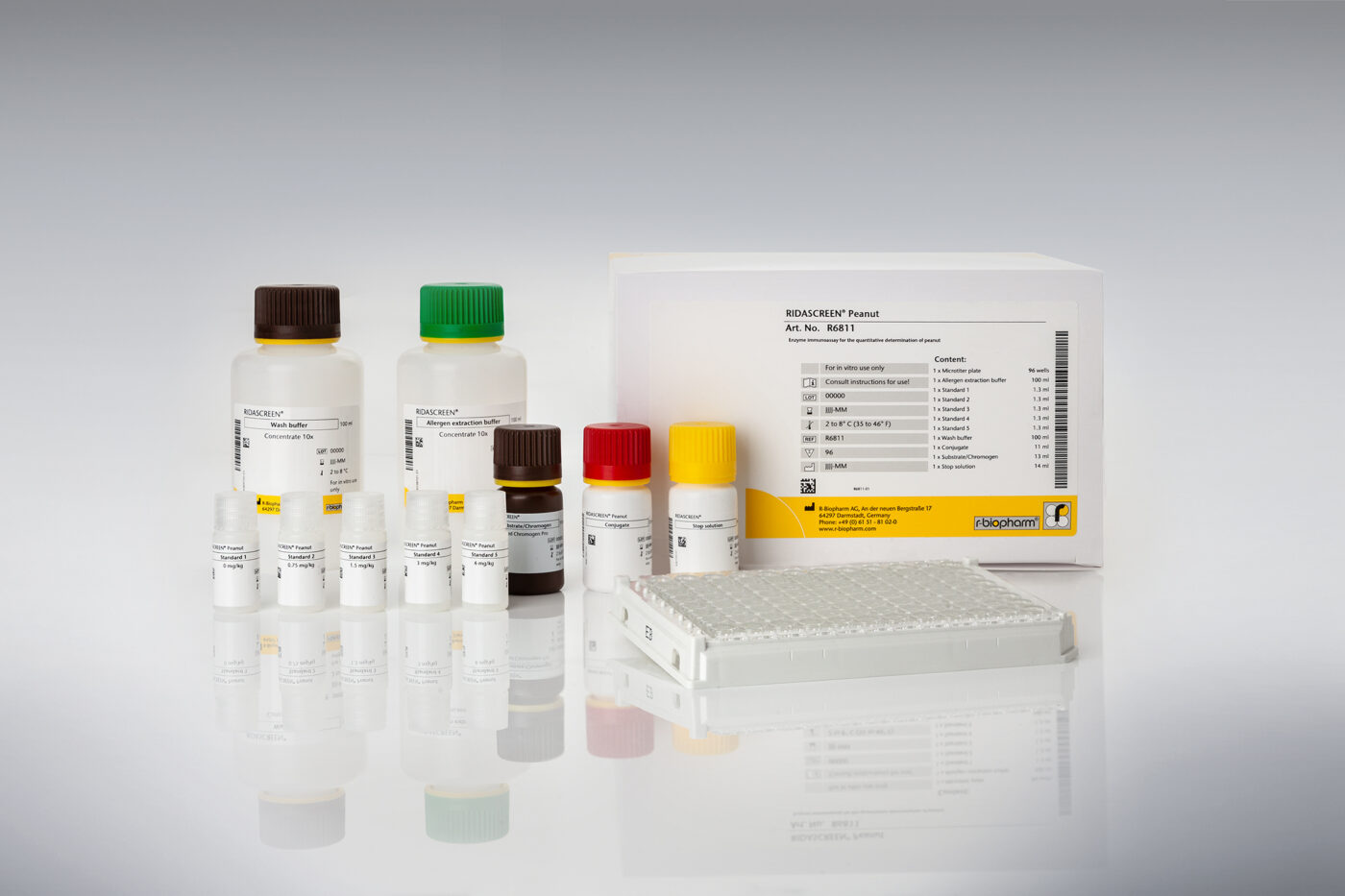
bioavid Lateral Flow Almond incl. Hook line
Art. No.: BLH701-15
Product info
Intended use
The Lateral Flow Almond (Art. No. BLH701-15) with included hook line from bioavid is an immunochromatographic test for the sensitive and qualitative detection of almond residues on surfaces (e.g. swab test for the hygiene control in food production lines), in cleansing and process water (CIP water) and food samples. The integrated hook line prevents false negative interpretation of high positive samples.
**NEW**
All for swabbing now included in the kit!
General Information
Almond (Amygdalys communis) is one of the most popular tree nuts worldwide. Almonds are consumed as snacks and are common components of many bakery goods. The almond is available as a sweet almond, with a rough, cinnamon-brown skin, which is mainly used for raw consumption as well as for baking and in the production of marzipan and liqueur. Before consumption, the almond is scalded in hot water, so that the slightly bitter tasting skin can be easily dissolved. Dried again, they can be processed into flour or grated and split. Apricot kernels are partially used as cheaper alternative to almonds (e.g. perzipan instead of marzipan). Typically, apricot kernels cross-react in immunobased almond assays and cannot be differentiated from the almond allergen. Almonds belong to the family of Prunidea and are closely related to plums, cherries, apricots and peaches. Generally, the allergen can be present as an ingredient or as a contamination in raw and cooked products. Nuts in general are highly potent allergens and can induce slight skin reactions and gastrointestinal symptoms. In some very sensitive allergic patients, an anaphylactic shock may occur. Almonds have a high protein content of approx. 25 %. Approx. 95 % of almond proteins are water soluble making them a very dangerous cross contaminant in production lines. Until now, there is no cure for food allergies. Therefore, it is even more important to avoid cross contamination, which can lead to accidental consumption of almonds by allergic patients.
According to the regulation (EU) No. 1169/2011, almond must be declared on food labels as it can induce allergic reactions. Similar regulations exist e.g. in the USA, Canada, Australia and New Zealand.
Accessories
| Specifications | |
|---|---|
| Art. No | BLH701-15 |
| Test format | 15 test strips (15 determinations) |
| Sample preparation | • Surfaces (swabbing): swab surface with PBS-moistened swab and wash out the swab in the reaction vial • Food samples: homogenize food sample and centrifuge or filter • Liquid samples (e.g. CIP water): no preparation |
| Incubation time | 5 min Roomtemperature 2 - 25 °C (35 - 77 °F) |
| LOD (Detection Limit) | • Almond (in water): < 1 ppm • Spiked zero matrices: 10 ppm • Surfaces (swab samples): 0.02 µg / cm2 • CIP water: < 1 ppm |
| Detected analyte | Almond residues |
| Evaluation | Visual evaluation |




